-
 Simple and Easy-To-Create Pongal Kolam Designs To Decorate Your Home Traditionally
Simple and Easy-To-Create Pongal Kolam Designs To Decorate Your Home Traditionally
-
 This Diwali, Prepare to Welcome Goddess Lakshmi with a Mix of Traditional and Contemporary Décor: Unique Diwali Decoration Ideas for Your Home to Make It Look Spectacular Like Never Before! (2020)
This Diwali, Prepare to Welcome Goddess Lakshmi with a Mix of Traditional and Contemporary Décor: Unique Diwali Decoration Ideas for Your Home to Make It Look Spectacular Like Never Before! (2020)
-
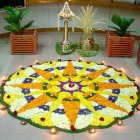 Creating Pookalams is One of the the Most Important Rituals of Onam: Make it Special with these Beautiful Onam Pookalam Designs (2020)!
Creating Pookalams is One of the the Most Important Rituals of Onam: Make it Special with these Beautiful Onam Pookalam Designs (2020)!
Tips on Rangoli Designs

The Significance of Rangoli
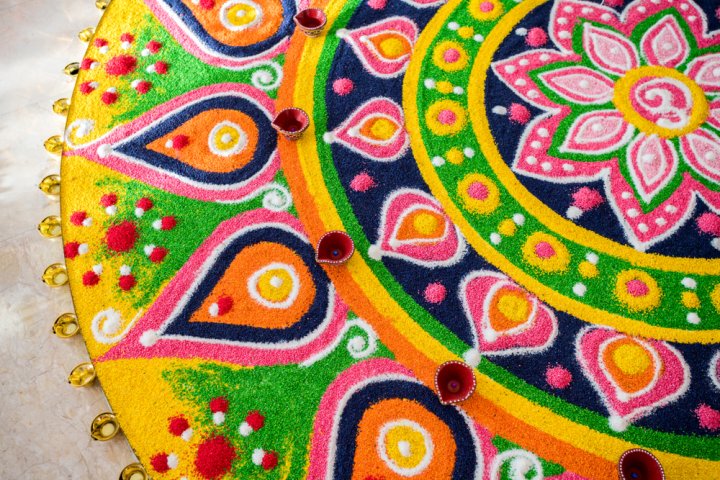
A Rangoli is an essential part of the Hindu culture and tradition that has both the elders and the young alike involved in its making. With a very significant place in the society, Rangoli is considered the first step to welcoming and inviting good luck, prosperity, blessings and abundance in life, in addition to guests of course! Vibrant and colourful designs made on the entrance floor/wall of any structure, home/office space, Rangolis have been a part of the Indian culture for ages, entailing different designs, ingredients and modes in making. Although known by different names in different parts of the country, the use of colours and elements, however, are more or less the same. Rangoli, known as Rangavalli in Maharashtra, Kolam in Tamil Nadu, Muggu in Andhra Pradesh, Chowk Purna in Madhya Pradesh, Mandana in Rajasthan, Alpana in West Bengal, Sathiya in Gujarat, Ossa in Odisha, Sona Rakhana in Uttar Pradesh and Rangoli in North India/Karnataka, is an extremely beautiful art form that is extremely popular all over India.
Rangoli Traditions
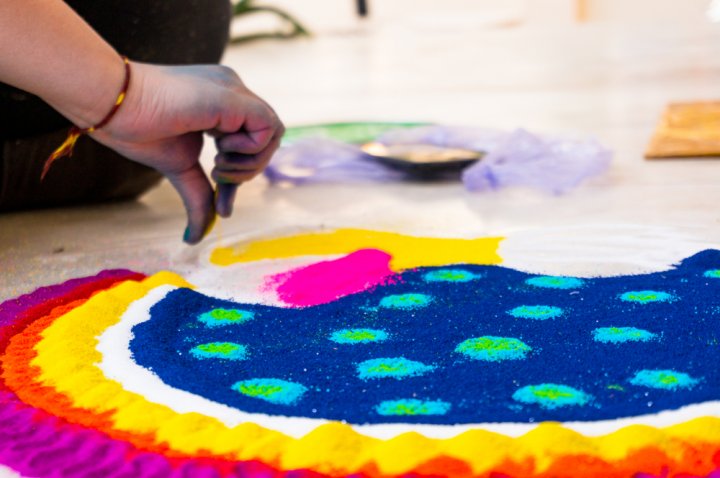
The purpose behind the designing of a Rangoli is to invoke good fortune in one’s life. Reflective of traditions, folklore and varied practices that are relevant to all sections of any society, a Rangoli is typically made by the women of the house, especially during festive celebrations, auspicious occasions, marriages and other milestone gatherings. Ranging from simple geometric patterns to religious impressions, spiritual symbols, floral shapes, the designs can be as elaborate and intricate as you’d like with a typical dry or wet base and inclusion of natural or chemical ingredients. In Chhattisgarh, known as Chaook, Rangoli is typically drawn at the entrance with dried rice flour or white dust powder, while in Maharashtra, it is drawn on the doors to prevent the entry of negativity or evil energies, in Kerala a Rangoli is made of flowers through the Onam festivities with a different and more complex design throughout the entire 10-day celebrations. In Rajasthan, it is painted on the walls, while in Odisha, the Murja is put in every courtyard before a Tulsi plant.
Easy to Create Rangolis
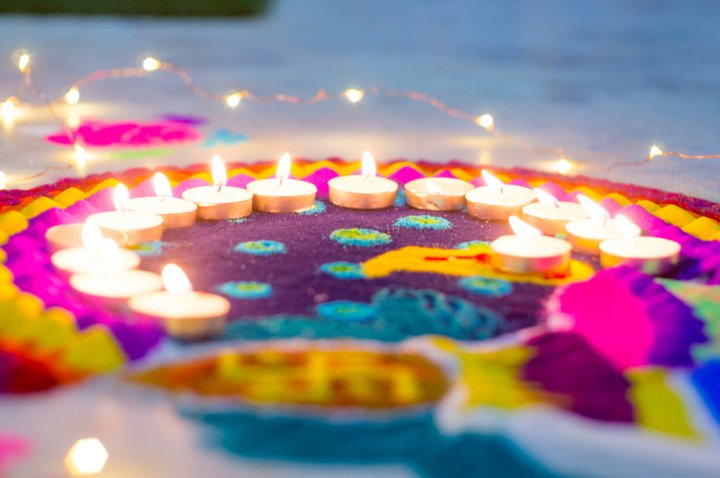
The most important elements of creating a Rangoli are its colour quotient and the auspicious symbols used in the pattern. With a variety of designs being passed on from generation to generation, traditionally, every generation hones its skills in this beautiful art thereby keeping the tradition alive and sacred to each family. Some of the most common symbols used in Rangoli designs include the lotus flower, leaves, mango, the vase, fish, different species of birds like swans, peacocks, parrots, etc. and human figurines and foliage. Special festivities like Diwali call for the inclusion of "Deep" (lamp), images of Lord Ganesha and Ma Lakshmi, their footprints, flowers and birds of India. Yet another significant element is the use of materials in the making of a Rangoli, with the most typical items being rice flour, dried powder, charcoal, burnt soil, wood sawdust and more. The background is yet another element that’s essential for the design, including a clear floor or a wall, the centre of a yard, or a special corner.
Colourful Rangoli Ideas for Diwali
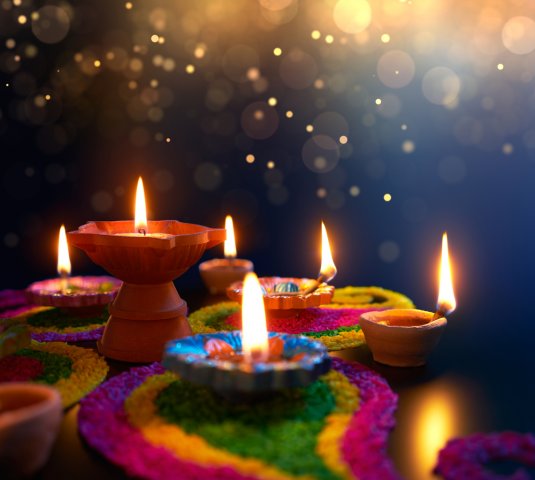
Stencil Rangoli
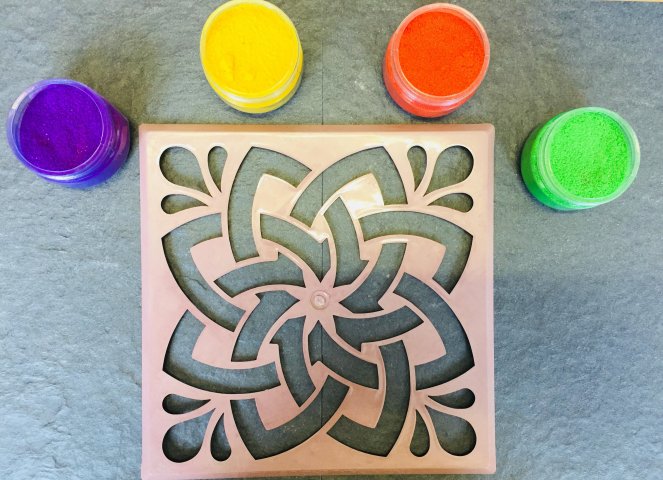
There are all kinds of stencils available in the market, and you could also design your stencils to make beautiful Rangoli designs. This option works the best for those who aren’t very confident about their creative talent. Stencil Rangolis have become quite popular and ends up looking very elegant and attractive as well. You can find some basic patterns shaped in such a way that all you need to do is put colours over the stencil, and the hollow dots on the stencil allow the colours to fall on the surface, shaping up the design, while the rest of the colour remains amassed on the stencil. You can make your stencils using paper, disposable plates or even mosquito repellent coils!
Diya Rangoli

Diya (lamp) and colour Rangoli designs are plenty and perfect to set a mesmerizing and joyful tone on any occasion. With simple patterns and the use of bold colours, you can transform any plain-looking design into a captivating and elegant Rangoli. For instance, using just diyas to make a Rangoli is quite unique, the lit design will stand out if you just keep the earthen diyas in a pattern and then light them up together. Or you could use chalk or white paint, making a simple design and lighting up each corner with a diya. Another unique Diya Rangoli design could be to form triangles in different colours and then placing diyas at strategic positions to make it look pretty from a distance.
Rangoli with Flowers
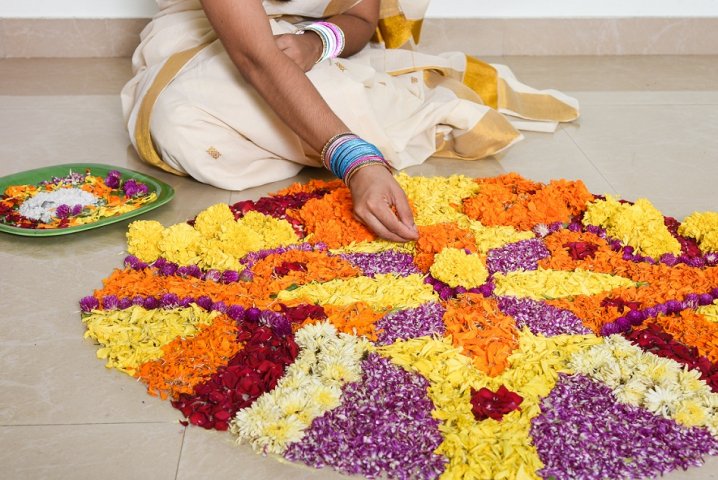
A blend of colours and flowers in a Rangoli is an ideal match with vibrant and festive colours. Flowers are a popular choice just like colours in a Rangoli owing to their auspiciousness, fragrance and of course natural colours. Being an art by itself, flowers make a Rangoli outstanding. You can use flowers for both every day and festive Rangoli designs. From designing a simple pattern that’s welcoming, like one yellow flower (marigold) in the centre with its petals and small white flowers surrounding it along with flower buds arranged in between the white flowers. This combination of flowers exemplifies purity and the circular pattern invokes positivity as well! Some other popular Rangoli designs include circular border patterns with bright-coloured flowers, symmetrical designs with thin coloured borders, tri-coloured floral patterns and more. Floral water Rangoli is another popular choice in which the Rangoli is made inside a bowl of water, filled with colourful lilies, rose petals, mogras or other flowers.
Painted Rangoli
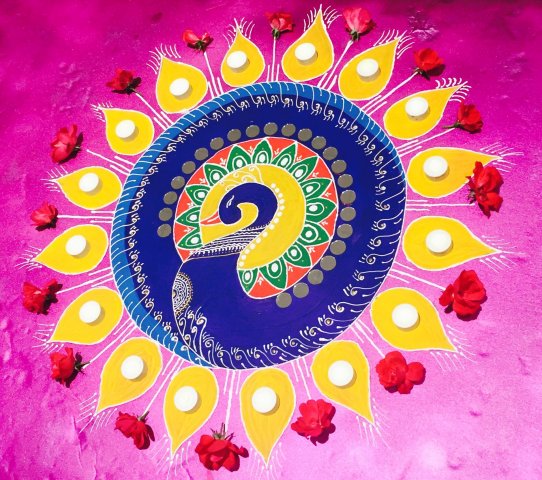
Diwali is all about celebrating happiness, cheer and invoking prosperity in every aspect of life. Experiment making Rangoli with oil paints, in dark shades, and multi-colours, which can be very impressive and shiny. The designs can be small or big as you would like them to be and can be enhanced by combining the patterns with flowers, diyas and other embellished items as well. Multi-colours not only enhance the element of elegance but also make the design more attractive. Border Painted Rangolis are ideal for entrances, doorways or temples. You can also use acrylic colours or watercolours in your designs.
Colourful Rangoli with Grains and Other Edibles
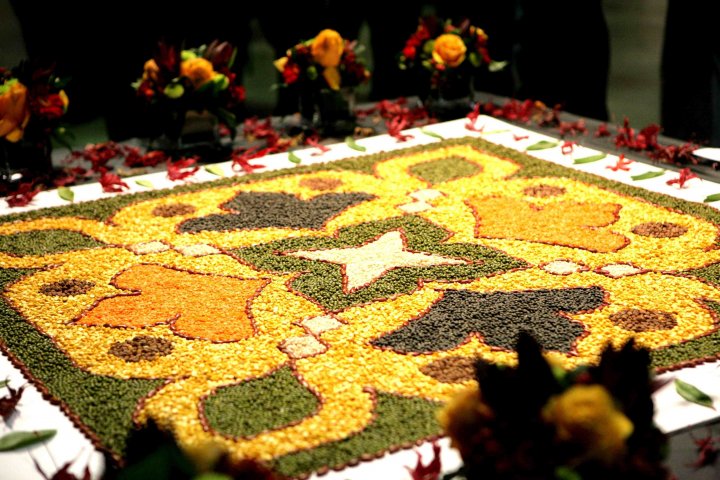
Back in the old days, food grains and other edibles were used to make Rangoli designs, including kumkum (vermilion), haldi (turmeric), salt, chilly powder, wheat flours, pulses, food colours, grains, rice flour and coloured rice. You can make different Rangoli patterns using only coloured rice or just a mix of edible powders, create designs with a combination of two-grain types or even multi-coloured and varied grains or experiment both with dry ingredients and grains together. Take creativity a step further by designing your Rangoli with fruits, paan (betel) leaves and flowers!
2D/3D Geometric Rangoli

Geometric patterns are simple and easy to make with a combination of shapes and textures/ingredients. 2D designs are more about a mix of circles, semi-circles and oval shapes, entailing fewer efforts and minimal skills with the possible addition of other accompanying items like flowers, diyas or grains. While, 3D patterns are nearly lifelike, with depth, width and height. They are so intricate that they seem alive! You can make either of these designs with acrylic paints, coloured sand, chalks in different hues, shades and vibrant colours and even with foam or felt shapes that have adhesive linings.
Embellished Colourful Rangoli
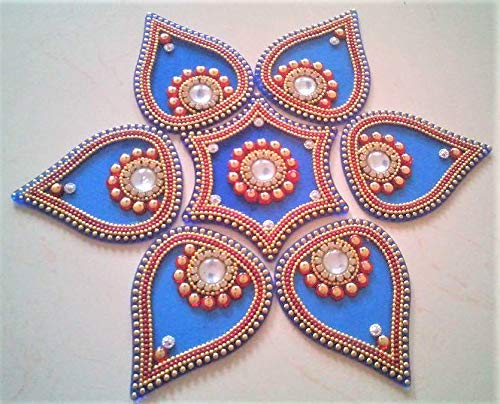
An embellished or Kundan Rangoli involves stones that are typically used in making traditional jewellery but aren't only limited to that use. It can be a combination of kundan stones, golden beads, pearl chains and borders, sequins and more. The beads can be studded to the floor by a crafts glue, that’s easily removable and make it more attractive by adding differently shaped diyas. You can design these patterns yourself or buy ready-made Kundan Rangolis from online portals/stores. Here’s a designer acrylic Rangoli shaped like a flower that includes 7 pieces in a set, available on Amazon, in a variety of colours like orange, blue, pink, red, and green, priced at Rs. 245.
Theme Based Rangoli
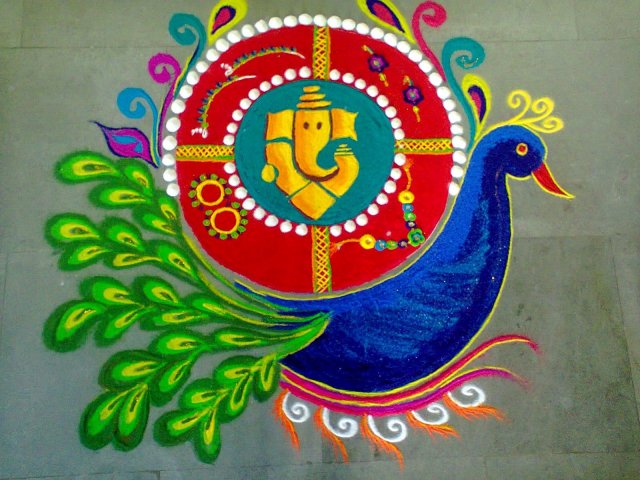
Rangolis that are theme-centric include festive and sacred symbols of a Kalash, Swastika, Aum or God/Goddess imprints like Ganpati, Laxmiji feet, lotus, diya, chakras, conch shells, Shree, zodiac symbols, human/animal or floral patterns and are widely popular and can be experimented with a person’s creative skills, interests and imagination. You can play around with a mix of different symbols, infusion of different themes with the inclusion of flamboyant colours and multi-colours at that. A Swastik symbol or Aum is considered very auspicious for Diwali and other special occasions with a combination of red-yellow-orange-blue & yellow colours. You can design this pattern and play around with its texture or designs by using different elements like spoons, bangles and more!
Clay Rangoli
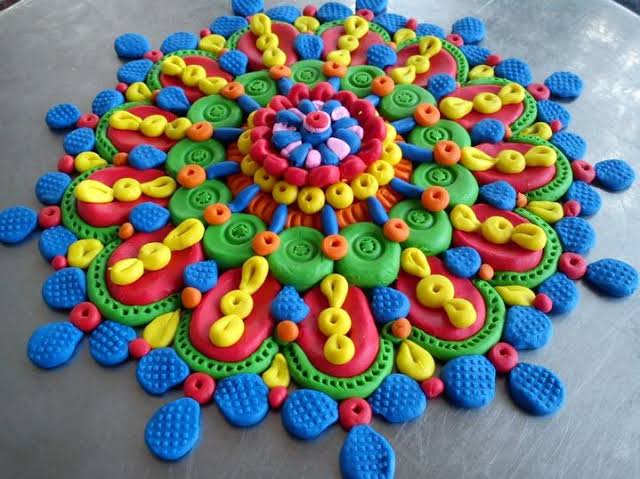
Rangoli made of clay is a rather unconventional way of designing and is typically made using clay moulds and clay in different colours. With a beautiful design of your choice and a novel approach, you can make your Rangoli exceptionally bright and unique from the others! Like other types of Rangoli patterns, a clay Rangoli would also look visually captivating of course, for which you can use Fevicryl dough for kids that can be shaped innumerable times without you worrying about wasting any!
Glass Rangoli
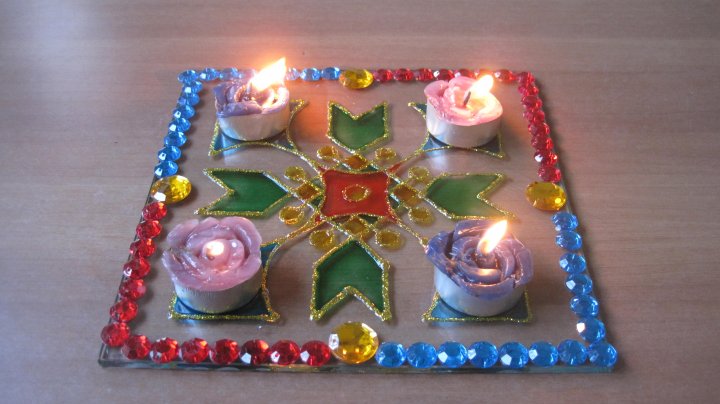
Yet another innovative way of designing your Rangoli could be with the use of glass. Even though this may require some extra bit of artistry, you’ll require items like glass tiles, glass paints, stencils, glass liners, OHP sheets and a whole lot of patience! Your first step would be to draw out your design/pattern on different glass tiles or use a stencil, then paint the designs with glass paints and leave them to dry completely. Once dry, put the tiles together to form a complete pattern and embellish it further with flowers, diyas or coloured stones.
Bonus Tip: Rangoli Hacks for When You're too Caught Up for Time!
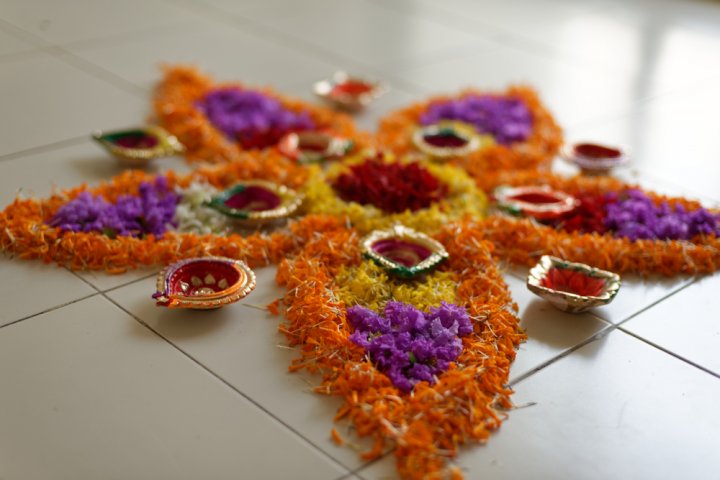
During Diwali festivities, everything is chaotic and everyone is extremely tied up running around cleaning space, getting rid of clutter, decorating their homes and offices or buying the festive essentials and gifts. During this bustling and exhausting period, concentrating on decorating your home with a beautiful Rangoli or learning how to make one would be the last thing on your mind! Here are some easy hacks to help you make Rangoli when you’re too short on time.
- Choose a design that’s basic and easy to make. Designs that are geometric or floral are fairly easy to make.
- Figure out where you’d like the design to be. Ideally, it should be at a place which doesn’t disturb your walkway and leave you enough space as well. An alternative option could be to make it on a cardboard with a black base where the colours and brightness of the design would be more prominent and attractively visible.
- Use a chalk to outline and then thicken your design, this makes it easier and faster for you to fill in leaving you enough room for experimentation and rectification!
- Use paper moulds or mehendi (henna) cones to fill your colours accurately without worrying about spilling them or spreading them outside the outlines.
- Use a stencil to fill in the colours or repeat to create a unique pattern.
- One of the best, easiest and effort saving options of designing a Rangoli is to go floral! Avoid making a mess and getting lost in designing your Rangoli. If you place a bunch of flowers with just a few floating candles in an urn of water, you’d be saving a whole lot of time and energy.
- To add a dimension to your outline, you should put in some white textured material like white sand or rice or use colourful embellishments like coloured bead chains.
-
 Top Diwali Gifts for 2020 to Give to Family, Friends and Associates
Top Diwali Gifts for 2020 to Give to Family, Friends and Associates
-
 Diwali Snacks You Can Make in Your Kitchen, which Are As Healthy As They Are Delicious! (2021)
Diwali Snacks You Can Make in Your Kitchen, which Are As Healthy As They Are Delicious! (2021)
-
 Have You Ever Thought of Creating Your Decorations and Adding Your Personality to Your Home(2021)? DIY Diwali Decoration Ideas and Crafts that You can Indulge in and Create Interesting Decor Items for Your Home This Diwali.
Have You Ever Thought of Creating Your Decorations and Adding Your Personality to Your Home(2021)? DIY Diwali Decoration Ideas and Crafts that You can Indulge in and Create Interesting Decor Items for Your Home This Diwali.
-
 If You Are Looking for Something Easy to Wear and Perfect for Any Occasion then Get Yourself a Gharara Suit(2020): 10 Best Gharara Suit for Sashaying Down the Ramp in This Trendy Yet Traditional Apparel
If You Are Looking for Something Easy to Wear and Perfect for Any Occasion then Get Yourself a Gharara Suit(2020): 10 Best Gharara Suit for Sashaying Down the Ramp in This Trendy Yet Traditional Apparel
-
 Have a Brighter Diwali with the Trendiest Gifts: 18 Diwali Gift Ideas for 2019
Have a Brighter Diwali with the Trendiest Gifts: 18 Diwali Gift Ideas for 2019
Add Another Dimension to Your Diwali Celebrations with a Beautiful Rangoli
Diwali is a festival that brings with it a lot of happiness, joy, family bonding time and mush more. It is also the time when everyone in the family is busy cleaning, buying, decorating, cooking and planning. Creating a beautiful Rangoli on Diwali not only adds another dimension to these celebrations but is also a great way of welcoming your guests, most importantly being Goddess Laxmi. We hope this BP Guide on Rangoli designs will help you quickly decide which type of Rangoli you would like to create for your home and office.


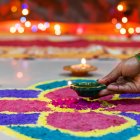
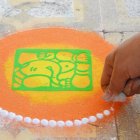
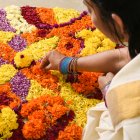

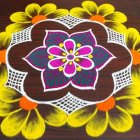

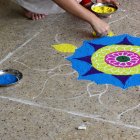

 Highlight the Best Facets of Your Incomparable Beauty: Discover the Best Face Highlighter Currently Available in India and Everything You Need to Know About Using Face Highlighters for Maximum Effect (2023)
Highlight the Best Facets of Your Incomparable Beauty: Discover the Best Face Highlighter Currently Available in India and Everything You Need to Know About Using Face Highlighters for Maximum Effect (2023)
 Forget the Blemishes and Get that Picture Perfect Flawless Radiance on Your Face: Check out the Best Foundations for Oily Skin Currently Available in India and Everything You Need to Know About Makeup Foundations (2023)
Forget the Blemishes and Get that Picture Perfect Flawless Radiance on Your Face: Check out the Best Foundations for Oily Skin Currently Available in India and Everything You Need to Know About Makeup Foundations (2023)
 Make Your Presence Felt Wherever You Go: Discover the Best Perfumes Under 2000 for Both Men and Women to Announce Your Arrival and Make Any Occasion Memorable (2023)
Make Your Presence Felt Wherever You Go: Discover the Best Perfumes Under 2000 for Both Men and Women to Announce Your Arrival and Make Any Occasion Memorable (2023)
 Protect Your Oily Skin from the Harmful Rays of the Sun: Discover the Best Gel Based Sunscreens for Oily Skin and Everything You Need to Know Before Buying One (2023)
Protect Your Oily Skin from the Harmful Rays of the Sun: Discover the Best Gel Based Sunscreens for Oily Skin and Everything You Need to Know Before Buying One (2023)
 Minor Blemishes and Wrinkles Affecting Your Confidence? Check out the Best BB Creams to Conceal Your Worries and Nourish Your Skin to Restore the Healthy, Radiant and Glowing Complexion Back Again (2023)
Minor Blemishes and Wrinkles Affecting Your Confidence? Check out the Best BB Creams to Conceal Your Worries and Nourish Your Skin to Restore the Healthy, Radiant and Glowing Complexion Back Again (2023)
